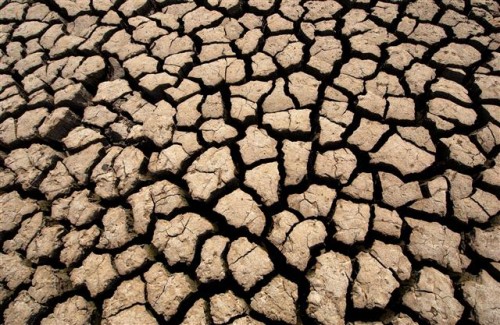Level 1 Drought Declared for Taylor County
The Office of the State Climatologist and the Kentucky Energy and Environment Cabinet, in coordination with the Kentucky Drought Mitigation Team (KDMT), are issuing a Level 2 Drought Declaration for counties in seven drought management areas (DMAs) in central and western Kentucky. In addition, a Level 1 Drought has been declared for an additional 16 counties in six DMAs. These new counties bring the total to 50 counties in seven DMAs under a Level 2 declaration and 35 counties in eight DMAs under a Level 1 declaration.
Several counties in the central and eastern parts of the state that are not within the Level 1 or 2 drought declarations are developing drought-like conditions and impacts as the result of the rapid change to a dry weather pattern over the past 30 to 60 days. If this pattern persists, drought declarations will be added for additional counties.
Counties within the new Level 2 drought declaration areas:
Bluegrass DMA: Anderson, Franklin, Harrison, Scott, Woodford
Green River DMA: Daviess, Hancock, Henderson, McLean, Ohio, Union, Webster
KIPDA: Bullitt, Henry, Jefferson, Oldham, Shelby, Spencer, Trimble
Lincoln Trail: Breckinridge, Grayson, Hardin, LaRue, Meade, Nelson
Northern Kentucky DMA: Boone, Campbell, Carroll, Gallatin, Grant, Kenton, Owen, Pendleton
Pennyrile DMA: Caldwell, Christian, Crittenden, Hopkins, Livingston, Lyon, Muhlenberg, Todd, Trigg
Purchase DMA: Ballard, Calloway, Carlisle, Fulton, Graves, Hickman, Marshall, McCracken
Counties within the new Level 1 drought declaration areas:
Barren River DMA: Edmonson, Hart, Warren
Big Sandy DMA: Magoffin
Bluegrass DMA: Boyle, Estill, Garrard, Lincoln, Madison, Mercer
Gateway DMA: Morgan, Rowan
Kentucky River DMA: Breathitt, Lee
Lake Cumberland: Green, Taylor
Counties already within the Level 1 drought declaration areas:
Barren River DMA: Allen, Butler, Logan, Simpson
Bluegrass DMA: Bourbon, Clark, Fayette, Jessamine, Nicholas, Powell
Buffalo Trace DMA: Bracken, Mason, Robertson
Gateway DMA: Bath, Menifee, Montgomery
Kentucky River DMA: Wolfe
Lincoln Trail DMA: Marion, Washington
Counties considered abnormally dry:
Barren River DMA: Barren, Metcalfe
Big Sandy DMA: Floyd, Johnson, Martin, Pike
Buffalo Trace DMA: Fleming, Lewis
Cumberland Valley DMA: Jackson, Rockcastle
FIVCO DMA: Boyd, Carter, Elliot, Greenup, Lawrence
Kentucky River DMA: Knott, Leslie, Letcher, Owsley, Perry
Lake Cumberland DMA: Casey
A Level 1 drought indicates moderate drought conditions have developed primarily affecting soil moisture and vegetative health. Serious impacts to agricultural water needs, an increased wildfire risk, water supply shortages with systems on small lakes and reservoirs, and other water-sensitive sectors can be expected in the designated areas.
A Level 2 drought indicates that the Level 1 risks are becoming an actuality. Low stream flows and lower-than-normal lake levels could lead to water conservation advisories and/or mandatory restrictions on water use.
Rainfall amounts of between 0.1 and 0.5 inches in some areas Wednesday have had little impact on the damaging drought that has plagued the state since midsummer. Severe drought conditions, indicated in areas designated as Level 2 DMAs, are centered in southern Indiana and extend into Kentucky in an area from Fulton County in the west to Campbell County in the north and east.
University of Kentucky Agricultural Meteorologist Tom Priddy said the continued lack of rain and persistent high temperatures have dealt a “disastrous blow” to agriculture across the Commonwealth.
“Tobacco hanging in barns is drying rather than curing,” said Priddy. “The continued lack of moisture will cause it to deteriorate further, thus decreasing its market value. Cattle farmers, likewise, are being forced to purchase water and use stores of winter hay as pastures deteriorate. Home gardens and farmers markets will also be impacted as local crops dry up.”
The extremely dry weather has also created perfect conditions for wildfires – many of which have occurred in agricultural fields as a result of sparks from harvesting or mowing equipment. As of Oct. 12, 38 Kentucky counties were under burn bans and campfires have been banned in portions of the Daniel Boone National Forest.
“The Division of Forestry has suppressed 196 wildfires since Aug. 1 compared to only six for the same time period last year,” said Steve Kull, assistant director of the Kentucky Division of Forestry, “and that number does not include wildfires suppressed by local fire departments. Extended periods of wildfires may result in the need to bring in personnel and equipment from outside the state, which will be very costly.”
Most of Kentucky’s potable water supply sources are currently at safe levels, say officials with the Kentucky Division of Water (DOW).
“The most recent weather outlooks indicate a dry pattern may persist well into November,” said Chip Zimmer, an environmental technologist at DOW. “Under this scenario, there is a potential for isolated water supply shortages in some areas as drought conditions worsen in central Kentucky and develop in eastern and southeastern Kentucky.”
The DOW will continue to monitor water supplies across the Commonwealth and issue water supply watches and warnings when necessary.
More information about drought declaration criteria can be found in the Kentucky Drought Mitigation and Response Plan athttp://water.ky.gov/wa/Documents/State%20Plan_Final.pdf



